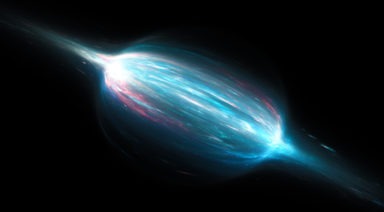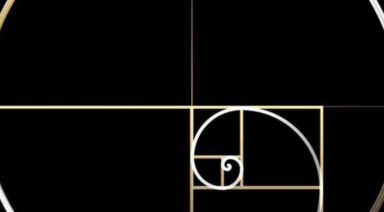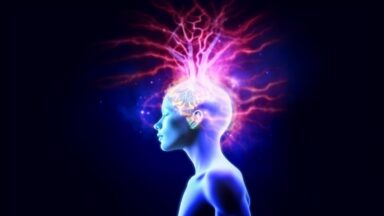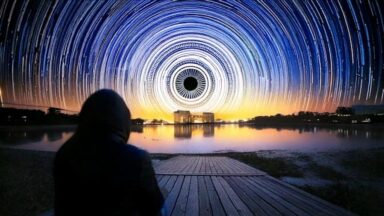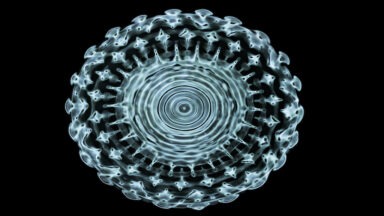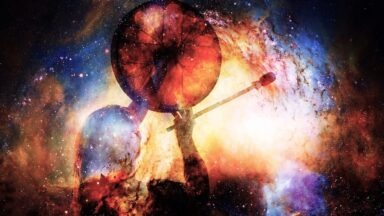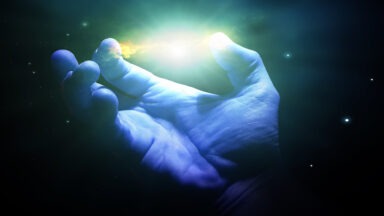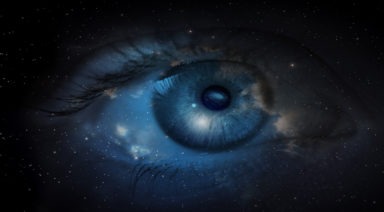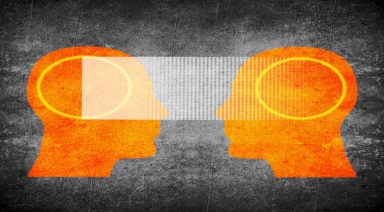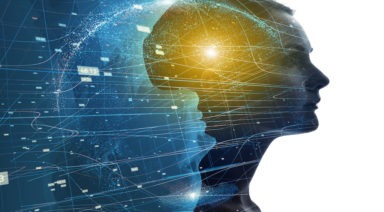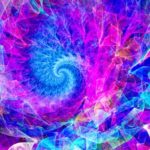Electric Universe Theory: The Science, Models and Controversy
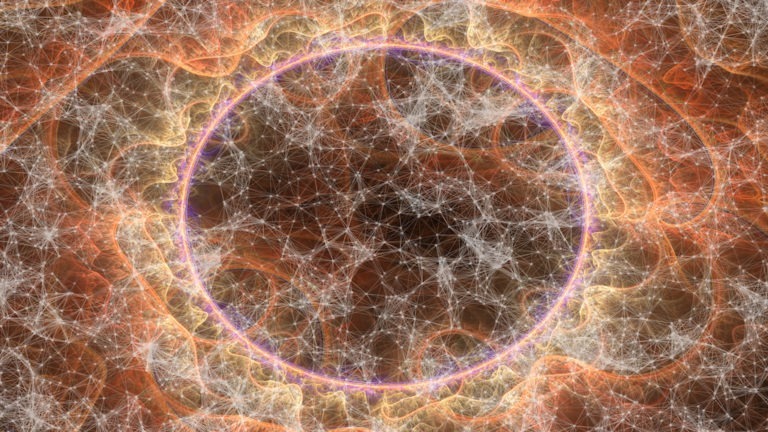
Before Einstein created his unique theorems on relativity, deflating Newton’s theories on gravity, Nikola Tesla posited the idea that electricity and energy were responsible for almost all cosmic phenomena. Tesla saw energy and electricity as an “incompressible fluid” of constant quantity that could neither be destroyed nor created.
If you want to find the secrets of the universe, think in terms of energy, frequency, and vibration.
— Nikola Tesla
What Did Einstein Conclude?
Einstein suggested and eventually proved (to a degree) that gravity is a curvature within a measurable reality, which he termed “space-time.” When you add time to the coordinates of length, width, and height, you get space-time. Consider space-time as a material fabric. When a mass or object is large enough, it can cause the fabric to warp.
Consider what happens when you lift your knees under a blanket. It warps the blanket. You can see that your knees (a mass) created a bend or cavity. This warp structure (bend, cavity) is gravity.
There’s much more to it, but this gives us a foundation to help us understand the beauty and challenges behind the Electric Universe Theory.
Foundational Concepts of the Electric Universe Theory
Most of us wander around our lovely planet never fully understanding how atoms, electrons, matter, and energy function. It’s not because we’re not interested, it’s because it’s complicated, and a bit intimidating. No wonder, the processes that create and support life are nothing short of miracles.
To better understand the Electric Universe Theory, let’s kick things off with a few core concepts.
Atoms
An atom is the basic unit of a chemical element. It consists of tiny subatomic particles, including protons, neutrons, and electrons. Atoms are surrounded by at least one negative electron. Electrons are like non-committal partners; they can easily separate from their host atoms. When electrons are emitted, all sorts of things can happen. For example, the Aurora Borealis (Northern Lights) is born from these currents, forming multi-colored sheets to burst across the sky. These bursts and sheets are forms of plasma filaments.
Plasma
Plasma is the most common of the four fundamental states of matter. The other big players are solids, liquids, and gases. Plasma is formed when ionized gasses become electrically conductive, meaning that electrical current (electricity) can flow through them. Fire and lightning are forms of plasma.
It’s in this way that stars and galaxies get their power. Currents flow into stars and power them like light bulbs. They can also induce the births of planets. You can see the remnants of these energy infusions in the form of craters throughout our galaxy.
Plasma Filament
As charged particles move around and throughout plasma, rings of magnetic fields can form around the electric current. This is called a plasma filament. Interconnected and perfectly woven, these filaments stretch across billions of light years, creating the silent equilibrium inherent in the physical universe. When current flows through plasma filaments, it generates colorful tendrils of light.
This is where Nikola Tesla (1856-1943) comes in. He invented the plasma ball by experimenting with electric currents in vacuum tubes. As such, many refer to the center ball as a “Tesla Coil.”
Tesla believed electricity powered the universe and could power our physical and eternal realities.
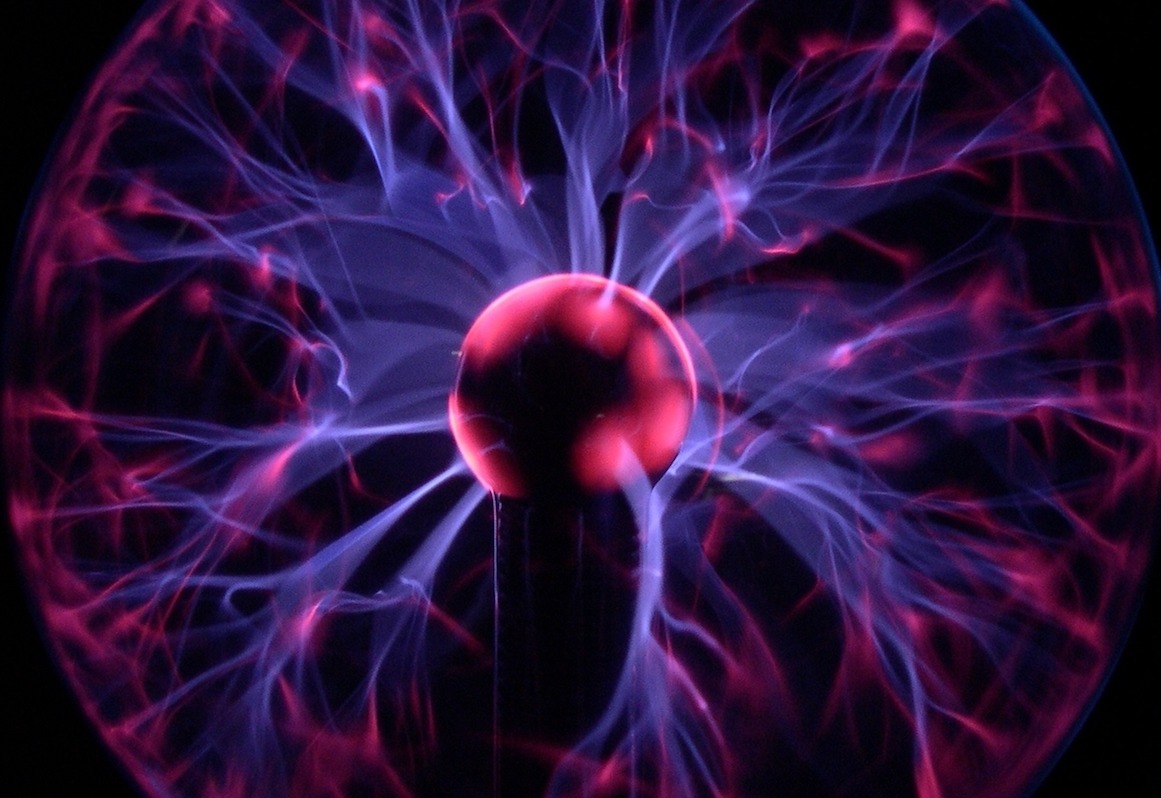
Tesla on Einstein
On July 11, 1935, the NY Times quoted Tesla, “The relativity theory…is much older than its present proponents. It was advanced over 200 years ago by my illustrious countryman Boskovic, the great philosopher, who, notwithstanding other and multifold obligations, wrote a thousand volumes…on a variety of subjects. Boskovic dealt with relativity, including the so-called time-space continuum.”
Tesla went on to say this about Einstein’s theories:
“…Magnificent mathematical garb which fascinates, dazzles and makes people blind to the underlying errors. The theory is like a beggar clothed in purple whom ignorant people take for a king … its exponents are brilliant men, but they are metaphysicists, not scientists….”
So, What is the Electric Universe Theory?
The Electric Universe Theory (EU) generally states that electricity is the engine behind a number of natural and astrophysical spectacles. It supports the idea that electricity powers the sun and stars and that cosmic occurrences are electrical in nature.
The theory also suggests that the universe is a vast, electric organism, chock full of yet-to-be-discovered masses, holes, relationships, and phenomena. EU advocates believe we’re just beginning to explore the possibilities around the concept.
Since the first pamphlet was distributed in 1983, there have been many papers, books, and theses published on the Electric Universe theory.
While some of the tenets of the theory appear to be difficult to prove in laboratory experiments, the idea that there is electricity throughout the universe and within every animal, plant, and everywhere else we find plasma is undeniable.
From subterranean electricity, known as Telluric currents, to atmospheric electricity (for example, meteors), and from extraterrestrial (or cosmic electricity) to electrostatic phenomena, electric currents are visible and audible. All of these things result from the interaction between electrical currents, filaments, atmospheres, and formations of matter.
The EU has been proven, disproven, celebrated, and dismissed throughout the last 125 years, and since Tesla disappeared from planet Earth.
“We live in an electronic world. Our cities are visible from space at night, blazing with electric lights. The electricity courses invisibly in the darkness over great distances along thin power lines. We find electricity indispensable. Nature does the same since all matter is electrical. Astronomy is stuck in the gas-light era, unable to see that stars are simply electric lights strung along invisible cosmic power lines that are detectable by their magnetic fields and radio noise.”
— Wallace Thornhill
EU Model vs. Standard Model
The EU Model and the Standard Model of particle physics offer distinct views of the universe. The Standard Model explains the fundamental particles and forces, including quarks, leptons, and gauge bosons. It uses quantum field theory to describe interactions through fundamental forces such as gravity, electromagnetism, and nuclear forces. This model is well-established and supported by extensive experimental evidence, including data from the Large Hadron Collider.
In contrast, the EU Model challenges mainstream science by questioning established concepts like gravity, black holes, dark matter, and dark energy. It posits that electricity and electromagnetic forces, rather than gravity, are fundamental to cosmic phenomena. The EU Model emphasizes the role of plasma, the most common state of matter, and plasma filaments in shaping celestial structures, proposing that electrical currents and plasma dynamics drive star formation and galaxy structures.
While the Standard Model remains the dominant framework in particle physics, the EU Model has garnered support from prominent thinkers and has contributed to other scientific theories.
Support for the EU Model
While there are many variations to the EU model, supporters of the theory tend to believe that the cosmology and phenomena found throughout the universe are driven by electricity, rather than gravity. This idea has many fans and even more enemies.
Immanuel Velikovsky
Immanuel Velikovsky (1895—1979), a Russian-born scholar, significantly influenced the Electric Universe (EU) movement with his controversial ideas. In Worlds in Collision (1950), he proposed that ancient cosmic catastrophes were caused by electromagnetic interactions between planets, not gravitational forces. He argued that planets like Venus and Mars had chaotic orbits, triggering electrical discharges that reshaped Earth’s surface.
Hannes Alfvén
The Plasma Universe is a concept and theorem established by Nobel Prize Laureate, Hannes Alfvén, known as the father of plasma physics and plasma cosmology. Alfvén believed that the visible universe is almost 100% plasma and his theory is often considered a companion to EU theory. Alfvén knew the interstellar and intergalactic networks of planets, comets, meteors, suns, moons, and stars were all plasma.
Kristian Birkeland
Central to the EU theory is Birkeland Currents, named after Kristian Birkeland, who discovered these electrical currents flowing through space. These currents are believed to connect celestial bodies and highlight the importance of electrical forces in cosmic interactions.
Ralph Juergens
The Electric Sun Hypothesis was developed by Ralph Juergens, an engineer and proponent of the Electric Universe model. Juergens proposed that the sun is powered externally by electric currents in space rather than by internal nuclear fusion, which is the prevailing theory. His hypothesis contrasts with the nuclear fusion model and traditional astrophysics, which suggest that the sun’s energy comes from reactions within its core. According to Juergens, electric fields and plasma currents drive solar activity, from solar winds to our overall solar system.
The Thunderbolts Project
The EU community, sometimes referring to themselves as The Thunderbolts Project, has a long list of social media channels and voices, including, Wallace Thornhill and David Talbott at the helm of the EU experience.
Despite being classified as pseudoscience by much of the scientific community, which generally supports theories rooted in general relativity, the Electric Universe (EU) model remains an influential alternative perspective. It challenges established views on gravity, dark matter, and dark energy and continues to provoke discussion. EU proponents argue that current theories, including those of Einstein, may have limitations and that new insights—especially around electrical forces in space—could reshape our understanding of the universe.
Putting It All Together
At 14 billion years old, the universe is still unfolding and expanding. Assuming that today’s theories are precise and comprehensive is a mistake. The full scope of the universe’s elements and truths has yet to be revealed. At the very least, we must remain open to new, potentially remarkable possibilities.
The biggest roadblock in the pursuit of life-enhancing technologies and disproving (or proving) the Electric Universe theories might be that today’s scientists are more concerned with algorithms than experiments. It’s important to keep in mind that equations do not create or prove realities; they propose and support imaginary ones.
Also relevant, governments and iconic business leaders have always been nervous around innovation and they’ve stifled it for the darkest of reasons:
- JP Morgan put an end to Tesla’s Wardenclyffe Tower in fear that its resulting wireless energy technology would interfere with the growth and profits from the companies that Morgan financed, including General Electric
- J. Edgar Hoover seized Tesla’s work upon the death of the unsung hero, fearing it might inspire a revolution in the country’s energy and economic infrastructures, putting power, profit, and influence in the hands of citizens instead of corporate entities
- Hundreds of patents were classified by the US Government over the past 50 years, which can easily be attributed to the notion that governments do not want people to be empowered, they want people to be reliant
Regardless of its limitations and imperfections, Tesla’s work and the suppositions surrounding the Electric Universe are compelling and can potentially lead to profound shifts in our thinking and forthcoming technological advances.
Given these ideas, we might reframe Einstein’s theories on special relativity by saying, “E = mc2 is relatively true, for now.”
Final Words Project: The Dying's Final Words Hint at Afterlife

What can the final words, spoken by the dying, tell us about life’s greatest mystery? According to the findings of a long-term research project, a great deal.
Lisa Smartt is a linguist who, in 2012, became interested in the words spoken by the dying when she noticed peculiar changes in her father’s speech as he was passing.
“So one of the things I noticed when I was sitting bedside with my father, well the first thing was he started talking about angels in the room, and my dad was a hardcore scientist. So when I heard my tough, gruff, cigar-smoking Papa talking about angels in the room, I took notice. Being a linguist, I pulled out my pencil and pad and started taking notes. Three days before he died, he shared that the angels say ‘only, three days left,’ and indeed three days later he was gone. And what began to emerge in my notes intrigued me, and led me to the language of the dying, but there wasn’t much written. So I attended a workshop with Dr. Raymond Moody and together we established the Final Words Project.”
Since the project began, Lisa has collected 200 accounts of the last words of the dying from those at their bedsides. Throughout more than a decade of analysis of 2,000 final utterances, Lisa has come to see many universal patterns and recurring themes.
“Specifically you see patterns about a big event coming, someone might say, ‘oh, the big dance is coming’ or ‘the big art show is coming,'” Smartt said. “And then people also talk about traveling, some say ‘the ship is ready’ or ‘the boat is ready,’ feeling that something is kind of moving them along that’s bigger than they are. And then another way that this hybrid language appears is someone may say ‘get me my checkbook, I need to pay at the gate,’ as if they’re referring to Heaven’s gate, so they’re bringing pieces of this world and beginning to talk with the other.”
“People might start talking about things that some family members or loved ones might think are nonsense like ‘my husband (who had died 10 years ago) is standing at the edge of my bed.’ Now to some people they may think that’s nonsense, but it seems from our research and others that there actually are visitors standing at the bedside with those who are dying and that’s not nonsense,” she said.
One particularly fascinating implication is the glimpse these final words seem to provide of what may come after physical death.
“There’s a lot of repetition, you know one well-known example of this is Steve Jobs ‘wow, wow, wow’ before he died, I think those were actually his very final words, and you can only imagine, what did he see? What did that exclamation refer to? People definitely start talking about how beautiful it is over there. I’ve come in contact with so many people who have had near-death experiences and there’s such a sense of peace, and you can see this in some people even before they die. There is this energy that seems to be moving toward some kind of new emergence or a new state of being,” Smartt said.




